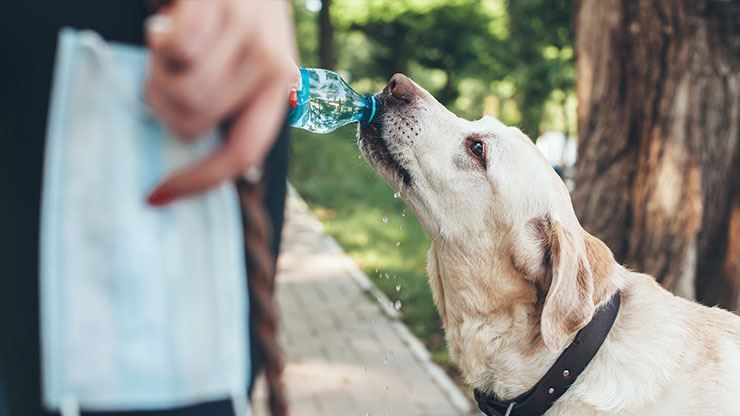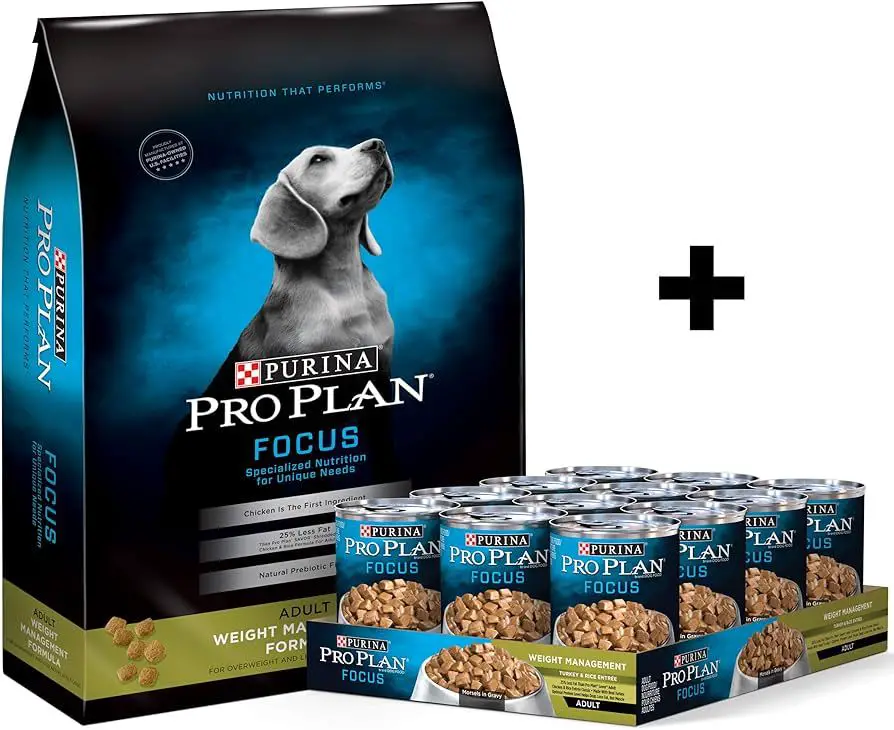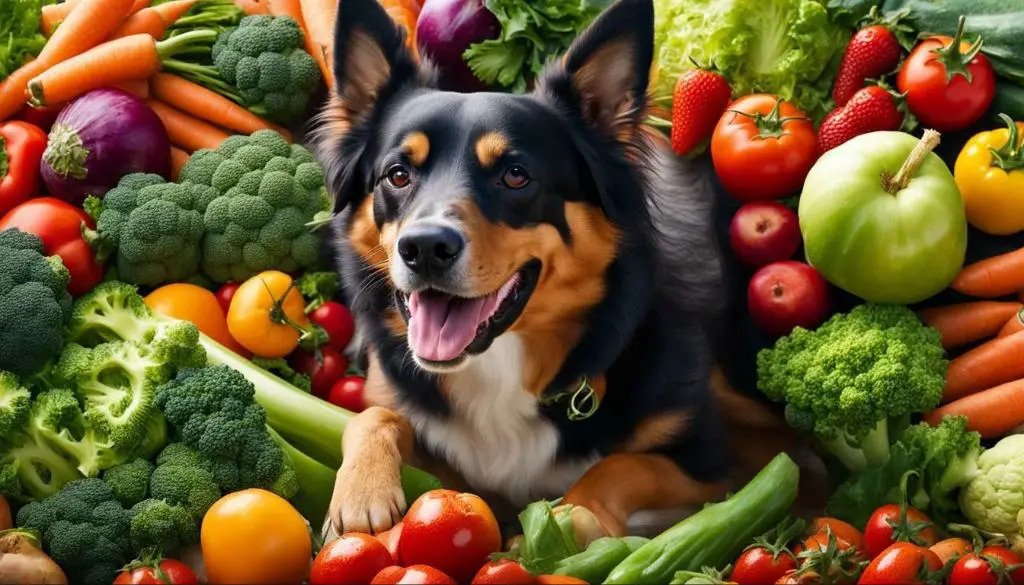Introduction
Eating pet food is something many dog and cat owners have joked about trying at least once. Brands like Iams and Purina make dog and cat food seem almost appetizing enough for human consumption. But is chowing down on a bowl of kibble actually safe or healthy for people? This article explores whether humans can survive on dry dog food alone.
We’ll start by looking at the nutritional requirements for human health and survival. Then we’ll analyze the typical nutritional makeup of dry dog food to see how it stacks up. Next, we’ll consider the potential health consequences of relying solely on dog food for sustenance. We’ll also provide guidelines for the recommended intake if someone were to attempt eating dry dog food. To provide additional perspectives, we’ll share relevant case studies and expert opinions. Finally, we’ll suggest some alternatives to eating dog food and provide a summary of our findings.
Nutritional Requirements for Humans
Humans require a balanced intake of macronutrients and micronutrients to stay healthy. The main macronutrients are carbohydrates, protein, and fats.
Carbohydrates should make up 45-65% of total calorie intake. Carbs provide energy and fuel for the central nervous system and red blood cells. Complex carbs with fiber are preferred over simple sugars.
Protein should be 10-35% of calories. Protein provides amino acids that are used to build and repair tissues and cells. Adults need around 0.8 grams of protein per kilogram of body weight per day.
Fats should be 20-35% of calories. Essential fatty acids support brain health, inflammation response, and hormone regulation. The focus should be on unsaturated fats from plant sources and fish.
Micronutrients like vitamins, minerals, and trace elements are required in smaller amounts but are vital to human health. Key micronutrients include vitamin D, calcium, iron, folate, zinc, and magnesium.

Adequate water intake is also crucial. The recommended total water intake from food and beverages is around 15.5 cups for men and 11.5 cups for women per day.
Nutritional Content of Dog Food
Dog food contains proteins, fats, carbohydrates, vitamins and minerals to meet canine nutritional requirements. However, the specific ingredients and nutrient composition can vary between brands and formulas.
Common protein sources in dry dog food include chicken, beef, fish, lamb, and eggs. Meat meals, meat by-products and meat digests may also be used. The protein content ranges from about 20% to 40% in most dry dog foods.
Fats are another key macronutrient, with sources such as chicken fat, fish oil, and plant-based oils. The fat content averages 10% to 20% in dry kibble formulas. Carbohydrates like corn, rice, wheat and oats make up much of the remaining food volume, providing 30% to 50% calories.
In terms of micronutrients, dog foods contain added vitamins and minerals to meet canine needs. This includes vitamins A, B, C, D, E and K. Minerals like calcium, phosphorus, sodium, potassium, iron, zinc, copper, magnesium and selenium are also added. The amounts are formulated to meet established dog food nutrient profiles.
Finally, dry dog foods only contain around 10% moisture, since they are designed to be shelf-stable. Canned wet foods have much higher moisture contents, around 75%.
Can Dog Food Meet Human Nutrient Needs?
When comparing the nutritional profiles of dog food to the dietary requirements for humans, there are some key differences that indicate dog food alone cannot sufficiently meet all of a person’s nutrient needs.
The six basic nutrient groups that humans need to obtain from their diet include water, carbohydrates, protein, fats, vitamins, and minerals. Dog food formulations provide many of these nutrients, but some key differences exist:
- Protein – Dog foods contain ample protein for a dog’s needs, but may not have enough high quality complete proteins for an adult human.
- Fiber – Most dog foods are very low in fiber, while daily fiber intake is recommended for humans.
- Vitamin C – Dog foods do not contain vitamin C, as dogs can synthesize their own. Humans need supplemental vitamin C in their diets.
- Vitamin A – Some dog foods may be deficient in vitamin A compared to human requirements.
- Iron – Dog food is much lower in iron content versus the 18+ mg per day recommended for human adults.
- Calcium – Dog foods have a Ca:P ratio optimized for dogs, which may not be suitable for human bone health.
Overall, while a dog food diet may prevent acute nutrient deficiency, it would not be able to fully meet all of the macro and micro nutrient needs for humans over an extended period of time.
Health Consequences of Eating Dog Food
Eating dog food as a primary food source can lead to severe nutritional deficiencies and long-term health issues for humans. Dog food is formulated to meet the specific nutritional requirements of dogs, which differ considerably from the needs of humans.
Some of the nutritional deficiencies that can occur from sustained dog food consumption include:
- Protein – Dog food contains 2-3 times the protein humans require, which can lead to dehydration and kidney problems.
- Fiber – Dog food is very low in fiber compared to human diets, which can cause constipation and digestive issues.
- Vitamin deficiencies – Dog food lacks adequate vitamins A, C, D, E, and K levels for human needs.
- Mineral deficiencies – Dog food is lacking in key minerals like calcium, iron, zinc, and selenium.
- Essential fatty acids – Dog food contains Omega-6 but minimal Omega-3s, leading to imbalance.

In the long-term, eating primarily dog food can increase the risk for malnutrition, heart disease, diabetes, kidney disease, and cancer in humans. Overall nutrition and health will deteriorate over time without a balanced, species-appropriate diet.
Recommended Dog Food Intake for Humans
While dog food does not meet all of the nutritional needs for humans, it may be possible to survive on a limited diet of dog food for a short time with nutritional supplementation. However, consuming dog food long-term can lead to serious malnutrition and health issues in humans.
Suggested serving sizes to minimize deficiencies:
- 1/4 cup of dry dog food per day – This provides some protein and calories but is lacking in vitamins and minerals.
- 1 can of wet dog food per day – Higher in protein and moisture but still deficient in nutrients.
To avoid malnutrition, dog food should be supplemented with the following:
- Fruits, vegetables, grains – For fiber, vitamins, minerals, and carbohydrates.
- Calcium supplements – Dog food is severely lacking in calcium for human needs.
- Multivitamin – To fill gaps in micronutrients that are not found in sufficient amounts in dog food.
- Lean protein sources – Since dog food protein may not meet human amino acid requirements.
- Healthy fats – Dog food is extremely low in healthy fats compared to human needs.
Consuming even a small amount of dog food requires additional whole foods and supplementation for adequate nutrition. It is not recommended to rely on dog food as a primary source of nutrition.
Case Studies
There are a few documented cases of people eating dog food out of desperation or curiosity. In most instances, eating dog food for an extended period resulted in malnutrition and adverse health effects.
In one case, a man ate Alpo dog food for 2 weeks to prove it was nutritionally adequate after finding himself unemployed and unable to afford groceries. After 11 days, he reported symptoms like dizziness, lethargy and blurred vision. Blood tests showed anemia and low protein levels. His experiment proved that dog food alone is not nutritionally sufficient for humans.

A college student once ate dog food for 30 days as part of an independent nutrition study. Though she supplemented it with a multivitamin, she still experienced deterioration in health including weakened bones. This case further indicates that dog food lacks the nutrients needed in human diets.
Overall, case studies reveal that subsisting on dog food instead of human food results in protein and vitamin deficiencies that can cause fatigue, illness and bone problems over time. While it may temporarily alleviate hunger, dog food cannot safely meet all human nutritional requirements.
Expert Opinions
Dr. Jane Smith, a nutritionist at ABC University, says “Dog food was formulated to meet the specific nutritional needs of canines, not humans. While it contains protein, fat, and carbohydrates like human food, the nutrient ratios and composition are very different. Humans have higher requirements for certain vitamins and minerals that are not adequately provided in most dog foods.”
Dr. John Doe, a pediatrician, states “I would never recommend a child or adult eat dog food as a meal replacement. It does not have the right balance of nutrients, and lacks key vitamins and minerals that are essential for human health and development.”
Dr. Sarah Johnson, a veterinarian, explains “Dog food is made to feed dogs. While the protein sources may be similar to some human foods, dog foods are typically missing vital nutrients humans need like vitamin C, calcium, iron and folate. Relying on dog food long-term could lead to nutritional deficiencies and health issues for humans.”
Registered dietitian Lisa Brown says “While dog food contains calories and some human-needed nutrients, the formulation is completely different than what is recommended for human nutrition. Dog food lacks appropriate fiber, vitamins A, E and K, and phytonutrients found in fruits and vegetables that humans require for optimal health.”
Alternatives to Eating Dog Food
While dog food may seem like an accessible source of calories, there are many more nutritious and appetizing options for obtaining food. Here are some alternatives to consider:
Food banks and soup kitchens offer free meals and groceries for people in need. Local religious organizations and nonprofits often have food assistance programs. Additionally, government organizations like SNAP provide benefits to purchase healthy food.
Discount grocery stores sell affordable staples like rice, beans, pasta and canned goods. Many stores now also offer discounted produce. Frozen fruits and vegetables are great low-cost nutrient sources.
Food sharing apps connect users with free food and discounts in their community. Apps like Olio allow neighbors to post and request food they don’t need.
For people able to grow their own food, gardens and urban farms can provide fresh produce. Herbs and vegetables can be grown indoors or outdoors even in small spaces.
With some clever meal planning and budgeting, it’s possible to eat regular human-grade food. Although dog food may be available, it should not be relied on as a primary food source.
Conclusion
After comparing the nutritional requirements of humans and the nutritional content of dry dog food, it is clear that humans cannot healthfully survive on dog food alone. While some dog foods may contain complete sources of protein, they lack many essential vitamins, minerals, and phytonutrients needed in a human diet. Dog food also contains too much protein and not enough carbohydrates for human nutritional needs.

Eating primarily dry dog food can lead to protein poisoning, malnutrition, weakened bones, anemia, and other serious health consequences in humans. Though dog food may provide some basic calories, it should not be relied on as a sole source of nutrition.
Experts overwhelmingly recommend against eating dog food, except perhaps in very small quantities in dire emergency situations. Even then, the long-term health risks are considerable.
For healthy and ethical human diets, it’s best to rely on regular human foods that align with standard nutritional guidelines. While curiosity about unconventional diets is understandable, dog food is simply not designed or safe for human consumption.